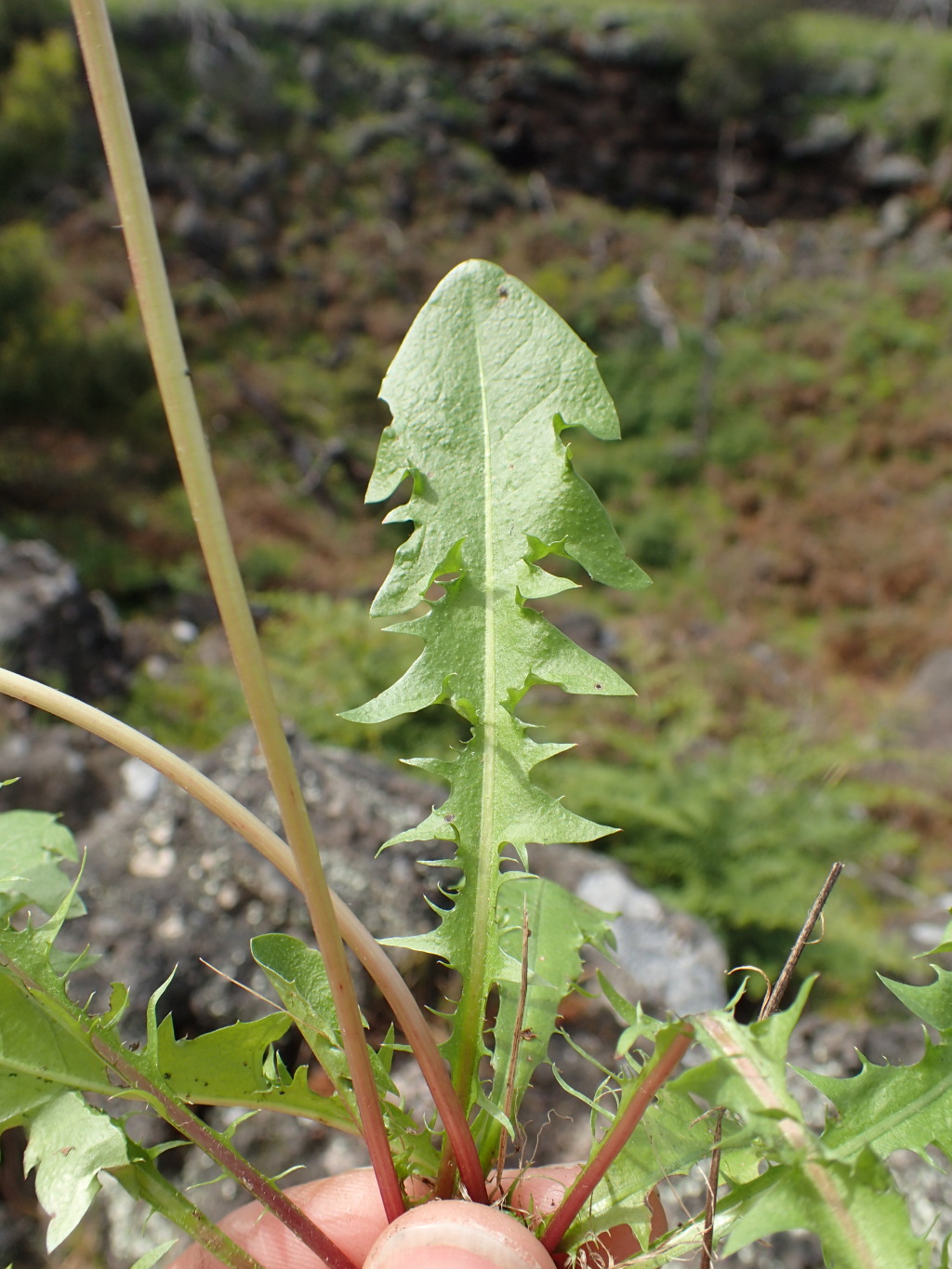Taraxacum hepaticolor
Soest DandelionLeaves lanceolate to oblanceolate, (4–) 6–12 (–18) cm long, 1–4 cm wide, glabrescent; upper lateral lobes in 5 or 6 pairs, triangular to falcate, distal margins entire to denticulate, sometimes with 1 or 2 patent teeth, proximal margins entire or rarely with 1 small tooth; petiole rose-purple, with wings very narrow to absent. Scapes (1–) 6–12 (–18) cm long at anthesis, 8–25 cm long in fruit. Capitula 2.5–3.5 cm diam.; outer bracts broadly lanceolate to lanceolate, 7–9 mm long, 2–3 mm wide, recurved, very narrowly white-bordered (c. 0.1 mm wide), not marginally ciliolate, variably callose at tips; innermost bracts linear, c. 15 mm long, c. 2 mm wide, rarely callus-tipped. Outer ligules often involute, exceeding involucre by 2–4 (–6) mm; anthers with pollen; stigmas greenish-yellow. Cypselas narrowly to broadly fusiform, 4–5 mm long, 0.8–1.0 mm wide, red-brown, with short, flat, rarely recurved spines 0.2−0.3 mm long at apex, the lower two thirds verrucate, rarely smooth; cone 0.8–1 mm long; beak 8–9 mm long; pappus 6–7 mm long. Flowers Sept.–Mar.
Wim, VVP. Native to Iran. Grows in a wide range of semi-natural vegetation and also in urban habitats in relatively dry areas.
Precociously flowering juvenile plants may have leaves entire or dissected less than halfway to the midrib. Taraxacum hepaticolor in “summer form” can be confused with T. multidentatum (See notes under that species).
 Spinning
Spinning

